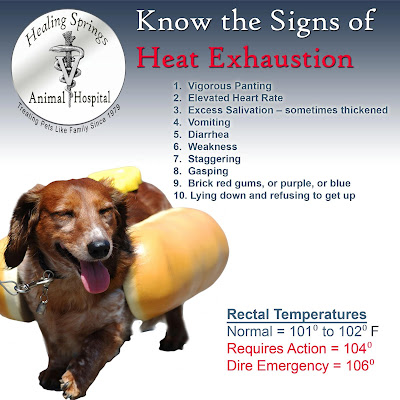My friend was in town last week and was talking vacation plans when she asked me about riding at the beach as part of the fun.
And all I could think about was the numerous cases of flesh eating bacteria being reported from the Gulf of Mexico in the recent weeks.
https://mic.com/articles/148638/flesh-eating-bacteria-in-texas-2016-update-vibrio-vulnficius-and-necrotizing-fasciitis#.4Pa5cM0Pm
http://www.foxnews.com/health/2016/06/21/mans-leg-amputated-after-contracting-unidentified-flesh-eating-bacteria-at-texas-beach.html
http://latino.foxnews.com/latino/health/2016/06/27/texas-man-infected-with-flesh-eating-bacteria-at-beach-second-case-in-june/
I can only imagine the potentially life threatening damage and subsequent vet bill that would be involved for a horse.
Not to mention the summer crowds are a pain away with the 100 degree days, fishing lines, kids, and dogs to worry about.
So I will save my beach ride for the off season. October is quite pleasant from the back of a horse.
A blog dedicated to all aspects of horse; care, training, and ownership. KnP Training is inspired by the real horse life of a young horse trainer and mother in Texas.
Thursday, July 21, 2016
Monday, July 4, 2016
Surviving Summer- Tricks and Tips for Keeping Your Horse Safe and Cool in Extreme Heat
Based in Texas, the summer heat is not something to be taken lightly. But by knowing the signs of heat stress and following these tips you can keep your best friend safe and healthy this summer.
1. Know the signs of heat stroke in horses.
2. Know your horse's normal vital signs and how to read them. How to take a horse's heart rate, respiration, and other vitals.

3. Monitor water intake and be sure your troughs are not in direct sunlight as much a possible, and consider freezing some giant ice ice cubes and adding to your trough as a summer treat.
4. Heat plus humidity equals sweat and too much sweating can quickly put your horse in danger. Add minerals and electrolytes to your horse's daily ration. If your horse will not to eat the electrolyte power try mixing it with apple sauce or other yummy disguises.
5. Know your horse's daily habits/patterns. When he naps and when he usually drinks. Knowing your horse's regular schedule can help you to identify an issue early on and greatly aid in a complete recovery.
6. Stay on top of possible dehydration with a daily skin test, and if you are concerned about dehydration speak with your veterinarian and withhold grain/feed (which could further dehydrate and cause colic).
7. Monitor pink skinned horses for sunburn and apply sunscreen, diaper rash cream (zinc oxide), and or protective masks and sheets as needed. In some cases a horse may do best stalled during the day and turned out overnight. All horses can be affected by photosensitivity caused by toxic plants.
8. Give them a shower, but be sure to scrap the excess water off.
9. Be sure your horse has access to shade. In a barn environment install fans when ever possible but be sure that they designed for outdoor/barn use. Misting systems are also great way to help keep your horse cool
And last of all.
10. Listen to your body, and take proper measures to ensure you also stay safe this summer.

And for the barn buddies.


1. Know the signs of heat stroke in horses.
- Restlessness/Lethargy
- Rapid pulse and breathing
- Heavy breathing
- Increased sweating
- Excessive salivation
- Redness of the tongue and oral area
- High body temperature
- Erratic heart beat
- Muscle spasms
- Stumbling
- Collapse
2. Know your horse's normal vital signs and how to read them. How to take a horse's heart rate, respiration, and other vitals.

3. Monitor water intake and be sure your troughs are not in direct sunlight as much a possible, and consider freezing some giant ice ice cubes and adding to your trough as a summer treat.
4. Heat plus humidity equals sweat and too much sweating can quickly put your horse in danger. Add minerals and electrolytes to your horse's daily ration. If your horse will not to eat the electrolyte power try mixing it with apple sauce or other yummy disguises.
5. Know your horse's daily habits/patterns. When he naps and when he usually drinks. Knowing your horse's regular schedule can help you to identify an issue early on and greatly aid in a complete recovery.
6. Stay on top of possible dehydration with a daily skin test, and if you are concerned about dehydration speak with your veterinarian and withhold grain/feed (which could further dehydrate and cause colic).
7. Monitor pink skinned horses for sunburn and apply sunscreen, diaper rash cream (zinc oxide), and or protective masks and sheets as needed. In some cases a horse may do best stalled during the day and turned out overnight. All horses can be affected by photosensitivity caused by toxic plants.
8. Give them a shower, but be sure to scrap the excess water off.
9. Be sure your horse has access to shade. In a barn environment install fans when ever possible but be sure that they designed for outdoor/barn use. Misting systems are also great way to help keep your horse cool
And last of all.
10. Listen to your body, and take proper measures to ensure you also stay safe this summer.

And for the barn buddies.


Subscribe to:
Posts (Atom)